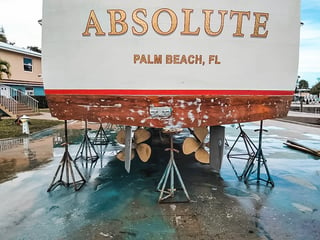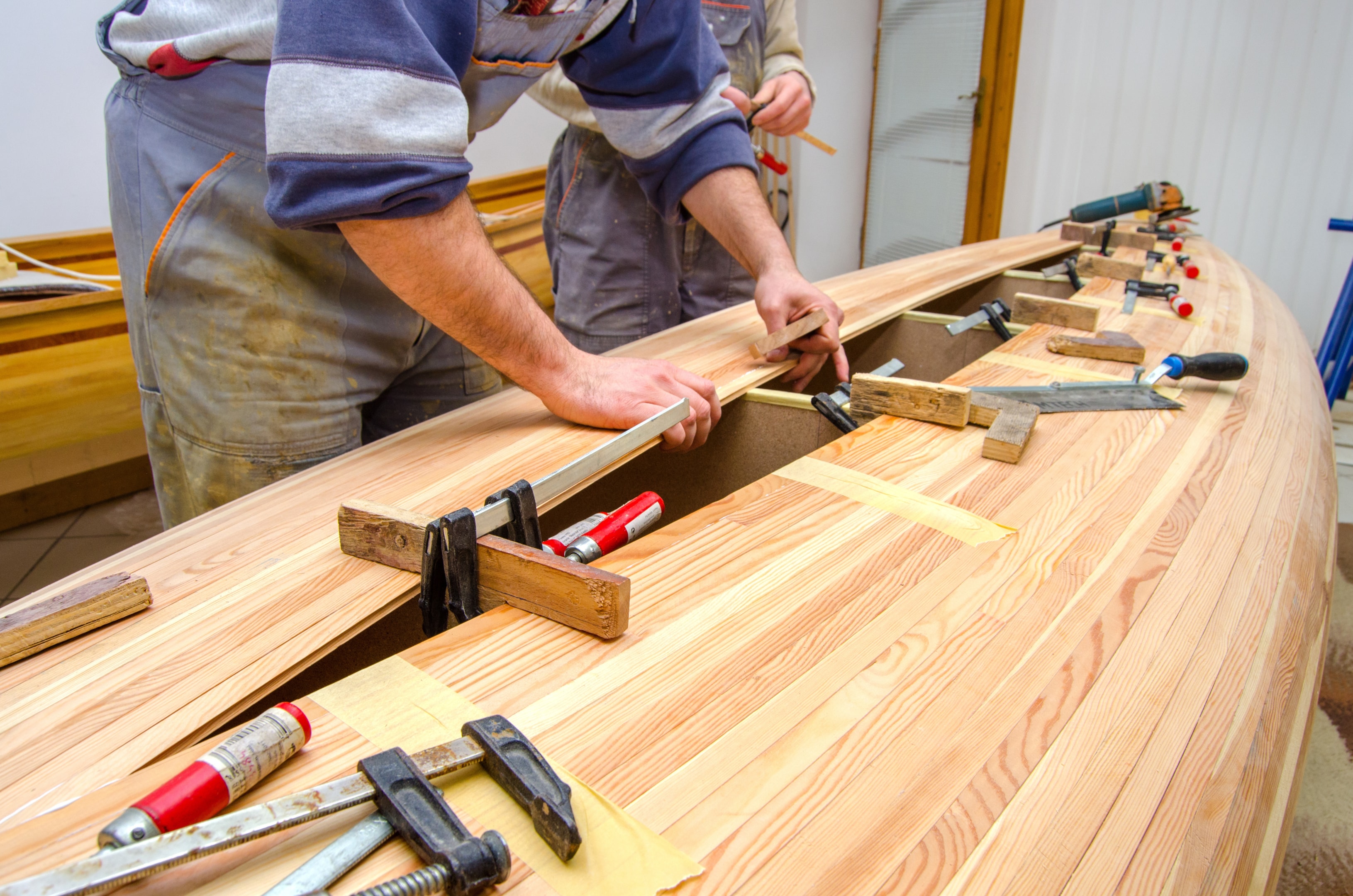The Art of Wooden Boat Restoration

In a powerboat world that values hi-tech gadgets and speed, it may feel like wood boats are vessels of the past. However, if you have ever seen one in person (or better yet, taken one out on the water), you know there is something special about the details and craftsmanship that goes into a wooden vessel built with passion; each a labor of love that marries skill and creativity. Wooden boats have charm, function and, most importantly, a rich history in the fabric of our ancestors, whose hand-dug canoes and log rafts helped navigate their way of life to create the one in which we live now.
If you find yourself the proud but overwhelmed owner of a vintage wooden watercraft, we are here to help. Owning a boat does come with its own set of challenges, particularly when it comes to maintenance and restoration, but with a little blast media and some TLC, we promise your dingy will have never looked better.
In this blog post, we will explore the commonly used wood types in boat construction, discuss classic wooden boat restoration options and share tips on maintenance to keep your boat afloat for many years to come.
Commonly Used Wood Types in Boat Construction
Before we dive into the methodology of restoring wooden boats, lets cover the commonly used wood types chosen by designers for their strength, durability and workability. Each type will require its own specific treatment for repair, so becoming familiar with the qualities of each is crucial for restoring wood boats.
Mahogany: Resistant to rot and decay, mahogany is ideal for use in the construction of boats and is easily identifiable by its beautiful grain and rich color.
Teak: Thanks to its natural oils that make it resistant to water damage, teak is another wood commonly found in boats. It has proven to be incredibly durable and can withstand harsh marine environments.
Cedar: Cedar is a lightweight and aromatic wood that is often used in boat building for its ease of use and preservation qualities.
Oak: Of the stronger woods used in the structural composition of boats, oak is highlighted by its stability, durability and resistance to water damage.
Methodology of Classic Wooden Boat Restoration
Restoring an old wooden boat can be a meticulous process that may involve stripping away layers of paint to repair any damage underneath and then taking precautions to preserve the restored wood.
Step One: Assessing the Boat
The first step is assessing the condition of the boat. This includes checking for rot, cracks, and any other structural issues that are in a state of disrepair like damaged planks or joints that need to be replaced.
Step Two: Stripping the Boat
Once the condition of the boat has been assessed, the next step is to remove the old paint and varnish. Paint can be stripped using a variety of tools, including heat guns, chemical strippers, scrapers, sanders or hand grinders. However, these traditional techniques have been known to be time consuming and can produce imperfect finishes. It is important to be gentle when stripping the paint to avoid inflicting any additional damage to the wood underneath, so sensitivity to the condition of the boat is key.
Pro Tip: One method that has proven time and time again to be effective in removing paint, varnish and stain without damaging the wood underneath is abrasive media blasting, otherwise known as sandblasting or dry blasting. We talk more about this method and how Dustless Blasting can make your surface preparation a breeze a bit later in this article. To learn about the basics of abrasive media blasting, visit our website by clicking here.
Step Three: Repairing the Boat
After the paint has been removed, any necessary repairs should be made. This may include replacing rotted wood, repairing cracks and re-caulking seams. Once the repairs have been completed, the boat boards can be sanded to the desired shape and treated with a high-quality marine varnish to protect the wood and give it a beautiful finish and/or to prepare it for painting. Be sure to follow the manufacturer instructions for proper application and sealing techniques.
Tools Used to Strip Paint from Wooden Boats
Heat Guns: These are commonly used to soften the paint so that it can be easily scraped away.
Scrapers & Sanders: These hand tools can be used to remove paint, depending on the size of the boat, the condition of the paint and how many layers there are.
Sandblasting (Dry Blasting): For larger boats or boats with multiple layers of paint, sandblasting may be the most effective method versus sanding or heat guns. Sandblasting uses compressed air to propel sand particles at high speeds, effectively removing paint without damaging the wood underneath.
For more information on sandblasting wood, click here.
Advantages of Sandblasting in Boat Restoration
Sandblasting offers several advantages for revamping worn and weathered boats. It is a quick and efficient method of stripping paint, making it ideal for larger boats or boats with many years worth of paint layers. Sandblasting also allows you the control to remove paint evenly, ensuring a smooth surface for refinishing and a higher quality finished project.
Another advantage of sandblasting is that it does not use harsh chemicals, making it environmentally friendly. Dustless Blasting allows you to minimize the spread of spent media and the coating removed, making containment and cleanup quick and easy and ensuring the safety of the surrounding environment.
Sandblasting is a powerful and efficient surface preparation tool for boats made of wood, but it can be used in all kinds of others applications as well. If you happen to be in the marine industry and need a solution for fiberglass, steel and metal boats, this solution can help tackle all of those and more. Take a look at the endless opportunities with the Dustless Blasting equipment by clicking here.
Tips and Tricks for Sandblasting Wooden Boats
-
Safety first: Before you start sandblasting, make sure to wear protective gear such as goggles, gloves, and a mask to prevent injury from flying debris.
-
Choose the right equipment and sandblasting media: When sandblasting wood, it's important to use the right equipment for the job. Make sure to select the appropriate abrasive material for your wood surface. We recommend crushed walnut shells or corn cob for wood applications. Also, consider the size and pressure of the sandblasting nozzle to ensure even and effective coverage.
To read more about abrasive blasting media and which are best suited for your particular application, click here.
-
Test blast: Before sandblasting the entire wood surface, test the equipment on a small, inconspicuous area to ensure that it doesn't cause any damage or splintering. Adjust the pressure and nozzle distance as needed to achieve the desired results.
To learn more about sandblasting nozzles and how to choose the right one for your project, click here.
-
Keep the nozzle moving: When sandblasting wood, it's important to keep the nozzle moving at a consistent pace in a sweeping motion to prevent over-sanding in one spot.
Click here to see how Dustless Blasting pros make paint and stain fly off of logs without compromising the wood underneath.
-
Clean and prep the wood: After sandblasting, use a vacuum or compressed air to remove any remaining abrasive material and debris, then sand the wood lightly to smooth out any rough spots before painting or sealing.

How to Prolong the Life of Wooden Boats
To prolong the life of any wooden structure, proper maintenance is key. Regularly inspecting the boat for signs of rot, cracks and other damage can help prevent costly repairs. Keeping the boat well-varnished and/or sealed creates a protective barrier, and protecting it from the elements can help extend its lifespan as well. The frequency of refinishing will depend on factors such as the type of wood used, the climate in which the boat is stored, and how often the boat is used.

Conclusion
By understanding the commonly used wood types in boat construction, knowing how to maintain and restore your vessel, and following best practices for its care, you can enjoy your ship for years to come. Whether you are restoring wood boats as a hobby or as a career, our recommendation is to look into abrasive media blasting as the tool you turn to for your restoration needs.




